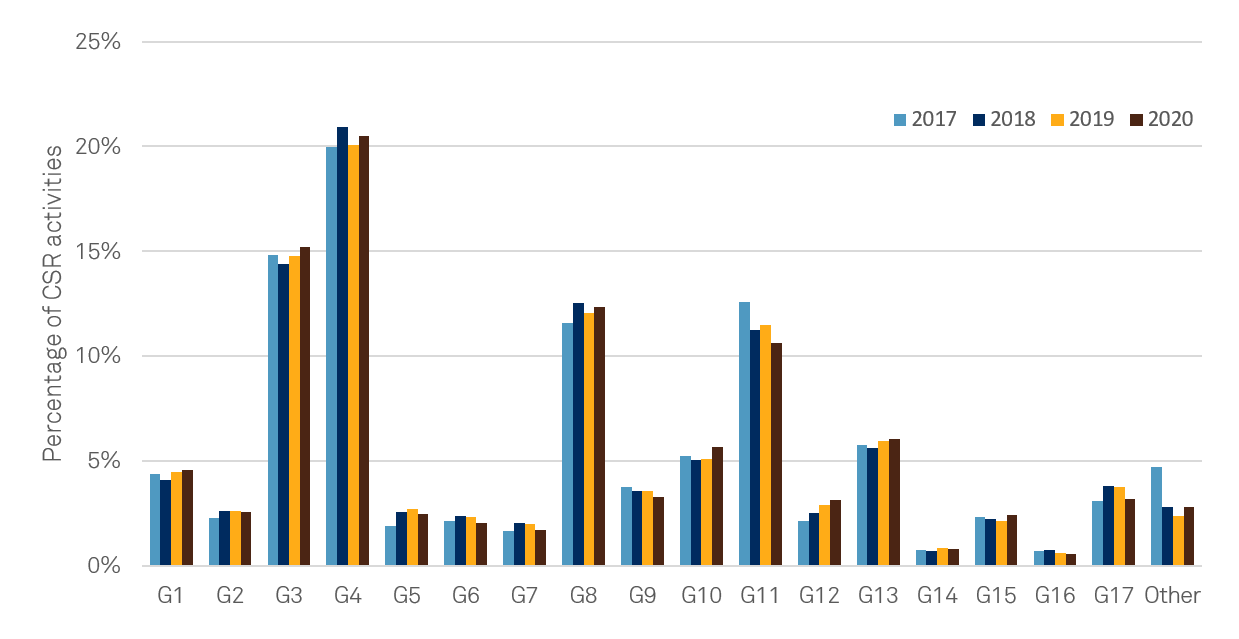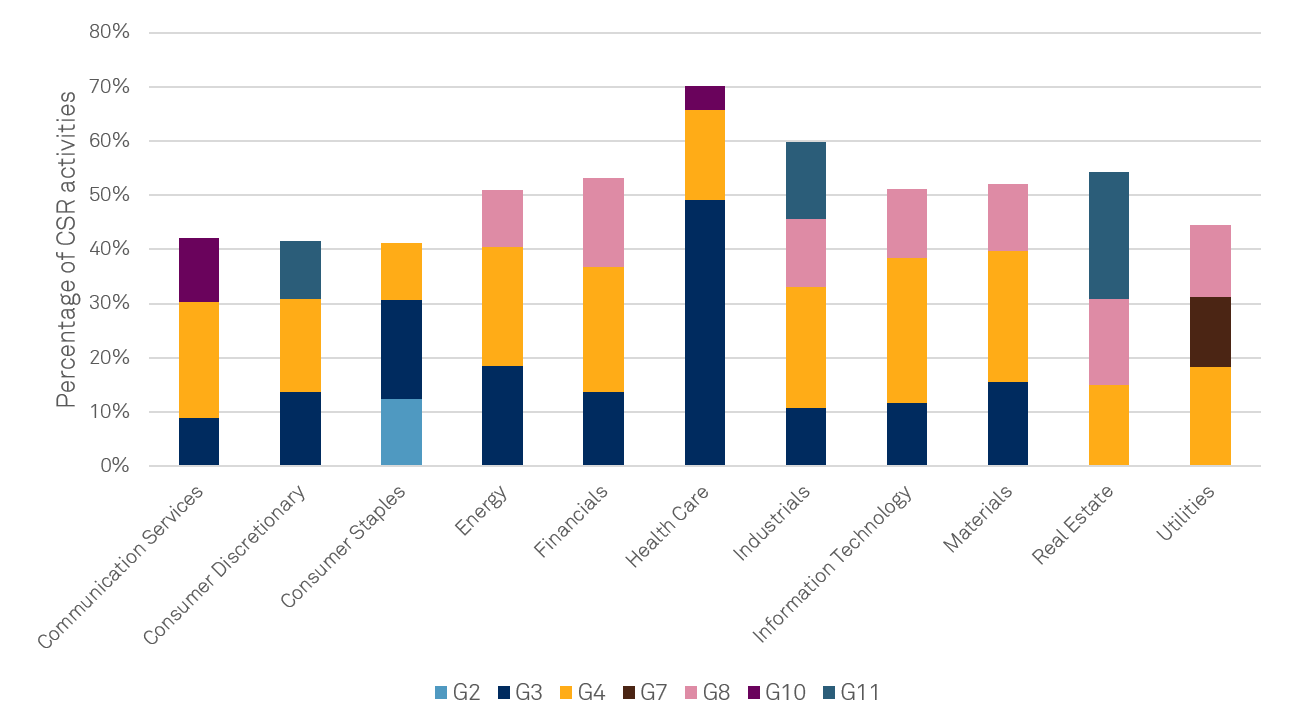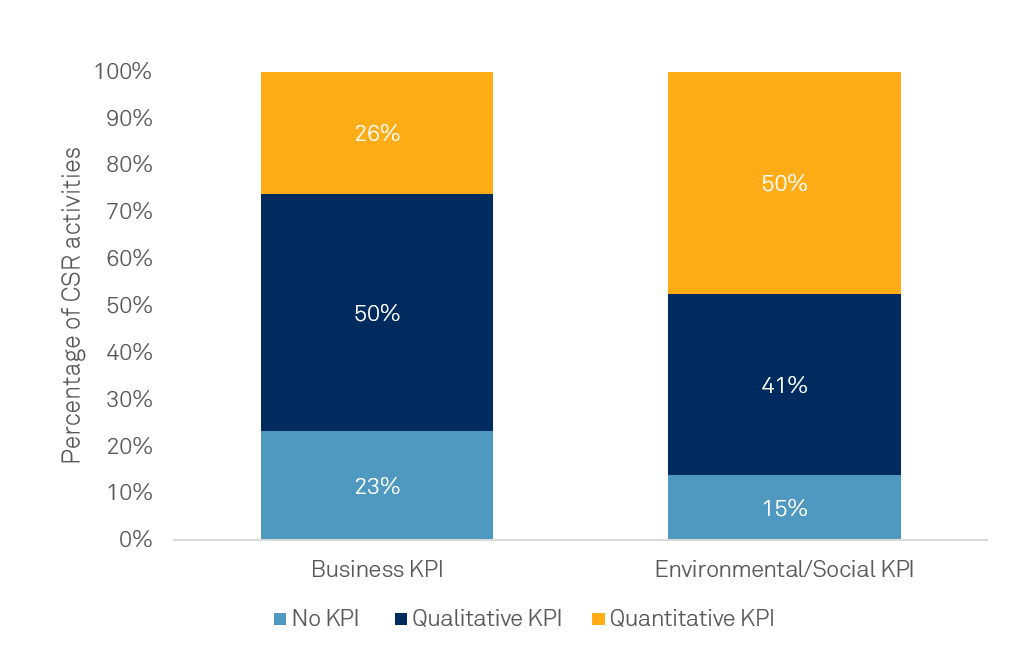Set out in 2015, the UN Sustainable Development Goals (SDGs) are deemed the cornerstone to drive positive social, economic and environmental impact in the 21st century. They form a blueprint for peace and prosperity for people and the planet to be achieved as part of the UN 2030 agenda. The 17 goals, encompassing 169 targets, were developed through extensive multi-stakeholder engagement. As such, they serve as a universal framework for governments, civil society, intergovernmental organizations, and businesses to work collectively towards sustainable development1.
Over the last five years, collective efforts have led to some advancements of the SDGs. For instance, The Sustainable Development Goals Report 2020 shows that maternal and child health has improved, more people have access to electricity and clean water, and more women are in positions of power in government1. Nonetheless, several goals have seen little or no advancement, and the COVID-19 pandemic has offset much of the progress made across all goals. Now more than ever, governments, civil society, international organizations, and businesses need to adopt the SDG roadmap and take actions to build sustainable and resilient economies while addressing global challenges.
Expectations and Opportunities for the Private Sector
Prior to the establishment of the SDGs in 2015, the main responsibility for driving international development and taking action to overcome global challenges rested on the shoulders of governments and international organizations. However, it is now widely recognized that, in order to make sustainable progress, a joint effort is required from all stakeholders, including the private sector. Businesses have a key role to play, not only in closing the financial gap to deliver on the SDGs, but also by contributing through their products and services, creating new economic opportunities, increasing access to job markets, and through innovation2, 3.
Companies strategically integrating the SDGs into their business strategy also benefit as they are better prepared both to manage reputational, regulatory, and operational risks, as well as to maintain their competitive advantage by expanding their market opportunities and improving overall performance4. While the SDGs offer companies a roadmap for alignment with global social and environmental goals, Corporate Social Responsibility (CSR) and corporate citizenship practices may act as a vehicle through which companies can better align with national and international development agendas.
Leveraging Corporate Social Responsibility for the SDGs
According to S&P Global’s Corporate Sustainability Assessment (CSA), over 90% of companies that actively participate in the assessment already have a publicly disclosed group-wide corporate citizenship strategy. However, to be a catalyst for development, these strategies must align with business drivers as well as environmental and social goals. Experts suggest that focusing on shared value, driven by better alignment between company policies and operating practices linked to economic and social progress, enhances competitiveness5.
Data collected through the CSA over the last four years shows that companies’ CSR strategies do align with all 17 SDGs. Figure 1 shows the percentage of group-wide CSR strategies by companies, which through one of their priority areas, addresses a particular SDG. Note that a strategy may have several priority areas, each of which can address an SDG – this allows us to capture the interconnected nature of the SDGs. As evidenced below, a higher proportion of company CSR strategies focus on addressing SDG 3: Good Health and Well-Being (even before the COVID-19 pandemic), SDG 4: Quality Education, SDG 8: Decent Work and Economic Growth, and SDG 11: Sustainable Cities and Communities. Over time, we also see that companies are not shifting their SDG priorities, suggesting that companies tend to focus on longer-term CSR strategies.
Figure 1: Company CSR strategies addressing the UN Sustainable Development Goals from 2017 – 2020

|
References |
|
|
|
SDGs: |
|
|
|
G1: No Poverty |
G7: Affordable and Clean Energy |
G13: Climate Action |
|
G2: Zero Hunger |
G8: Decent Work and Economic Growth |
G14: Life Below Water |
|
G3: Good Health and Well-Being |
G9: Industry, Innovation and Infrastructure |
G15: Life on Land |
|
G4: Quality education |
G10: Reduced Inequalities |
G16: Peace, Justice and Strong Institutions |
|
G5: Gender Equality |
G11: Sustainable Cities and Communities |
G17: Partnerships for the Goals |
|
G6: Clean Water and Sanitation |
G12: Responsible Consumption and Production |
|
|
'Other' means not aligned with an SDG. |
|
|
Source: S&P Global Corporate Sustainability Assessment (CSA) 2017 – 2020
Scope: 1517 companies participating companies from 2017-2020
At an industry level, there is some indication that companies focus their corporate citizenship efforts on SDGs which are linked to their business model. As seen in figure 2, nearly 50% of CSR activities for companies within the Health Care industry sector go towards SDG 3: – Good Health and Well Being, and similarly companies within real-estate tend to contribute more towards SDG 11: Sustainable Cities and Communities. However, the data overwhelmingly shows that companies tend to focus with the same intensity on the same SDGs as seen in figure 1. For example, 13% of CSR efforts by Utilities companies go towards SDG 7: Affordable and Clean Energy, yet a larger portion of their endeavours go towards SDG 4: Quality Education (20%). A similar finding is evidenced through the data on a regional level. While there are some differences between regions, on average a higher portion of CSR strategies focus on SDG 3, 4, 8, and 11. Ultimately, this highlights how efforts may be lacking in addressing some SDGs, and casts doubt on whether companies’ CSR strategies are diverse enough to achieve the various targets the UN has set out to reach by 2030.
Figure 2: Top 3 contributions to the UN Sustainable Development Goals by industry sector in 2020

|
References |
|
|
|
SDGs: |
|
|
|
G2: Zero Hunger |
G8: Decent Work and Economic Growth |
|
|
G3: Good Health and Well-Being |
G10: Reduced Inequalities |
|
|
G4: Quality education |
G11: Sustainable Cities and Communities |
|
|
G7: Affordable and Clean Energy |
|
|
|
|
|
|
Source: Corporate Sustainability Assessment (CSA) 2020
Scope: 1286 participating companies
Another key element of a CSR strategy is a company’s ability to quantify progress and measure outcomes, both for the business and for the environment and broader society. Interestingly, data from the 2020 CSA shows that companies are better able to quantify the environmental and social benefits of their CSR strategies relative to the business benefits. In fact, only 26% of companies’ CSR priorities are linked to a quantitative business-related KPI – examples include improved reputation or brand recognition, human capital development, and access to talent. This quantification of CSR impact amounts to 50% for environmental and social benefits, which trace back to the SDGs – examples here include the number of people accessing education, the number of microcredit beneficiaries, and additional clear water sources installed, among others. The lack of quantifiable business-related KPIs highlights the misconception that CSR strategies are not connected to the core business and raises the question of whether these strategies can create meaningful impact in the future when the benefit to the business is unclear.
Figure 3: Business and Environmental/Social KPIs related to CSR Priorities

Source: S&P Global Corporate Sustainability Assessment (CSA) 2020
Scope: 1286 Companies
The Road to 2030
With less than a decade remaining, more action is needed from all stakeholders to deliver on the promise of the UN SDGs. While there is clear indication that the private sector is starting to leverage its expertise and assets to contribute to the SDGs, the data suggests that companies are focused on few goals and are falling short in quantifying the business benefit for contributing to them. Such a mismatch raises the question about how robust and mature companies’ corporate citizenship and CSR strategies are in order to effectively deliver significant contributions to achieving the goals. Therefore, understanding the gaps that companies face in their CSR strategies, and in their pledges to contribute to the SDGs, is one of the first and most important steps towards their achievement.
Sources:
1 United Nations. (2020). The Sustainable Development Goals Report 2020. https://unstats.un.org/sdgs/report/2020/The-Sustainable-Development-Goals-Report-2020.pdf
2 Scheyvens, R., Banks, G., & Hughes, E. (2016). The private sector and the SDGs: The need to move beyond ‘business as usual’. Sustainable Development, 24(6), 371-382.
3 ElAlfy, A., Palaschuk, N., El-Bassiouny, D., Wilson, J., & Weber, O. (2020). Scoping the evolution of corporate social responsibility (CSR) research in the sustainable development goals (SDGs) era. Sustainability, 12(14), 5544.
4 PWC. (2016). Navigating the SDGs: a business guide to engaging with the UN Global Goals. https://www.pwc.com/gx/en/sustainability/publications/PwC-sdg-guide.pdf
5 Kramer, M. R., & Porter, M. (2011). Creating shared value (Vol. 17). FSG


